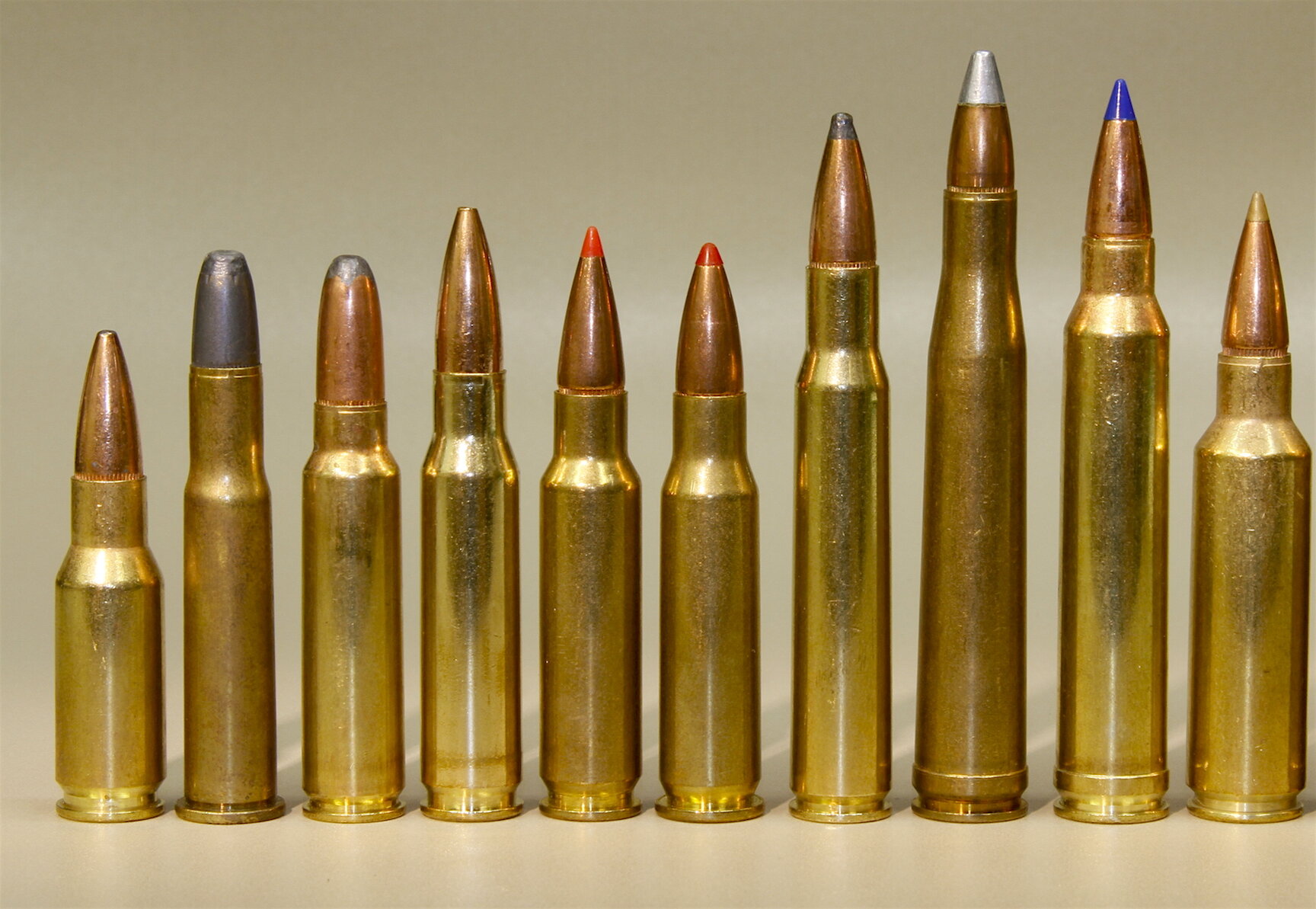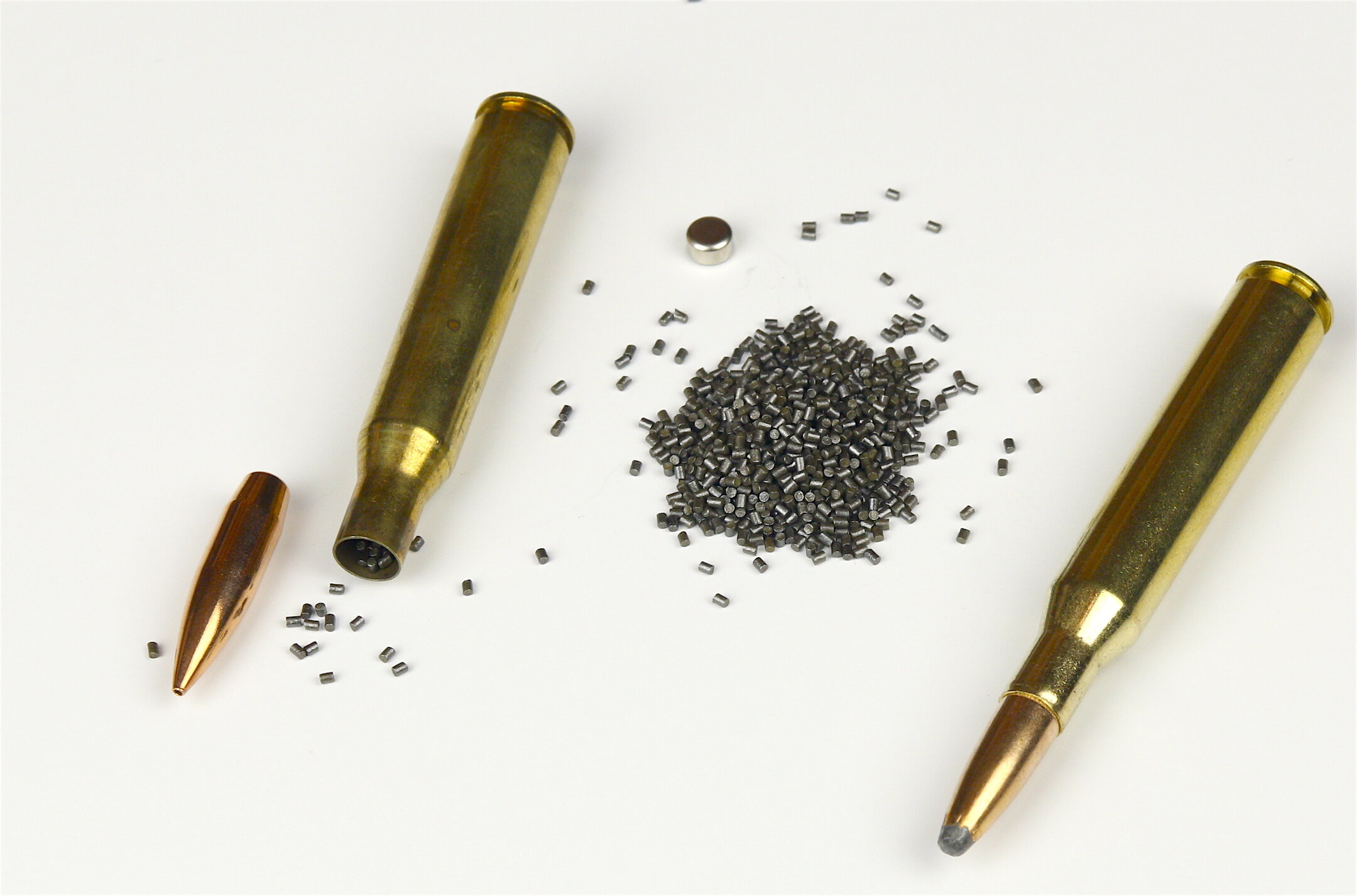Why Bullets are not Dangerous
These are "live" cartridges, meaning they could be ignited to propel a bullet from a barrel in a properly fitted firearm.
I just made it through airport security with a 130-grain "dangerous bullet" in my carry-on — and TSA okayed it!
That means one of two things: 1. TSA no longer cares or 2. Bullets are no more dangerous than stones of the same size.
The correct answer, of course, is #2. Bullets are inert chunks of metal. Contrary to news reports about “live bullets found at the scene,” bullets are not “live.” They are not explosive, cannot be ignited, “set off” or fired — unless they are fitted atop a case filled with powder and a primer. This package is called a cartridge. (See below) You members of the press are welcome to quote me on this.
Far right is a cartridge. Far left is a bullet beside a brass case which has been emptied of its powder and the little metal primer disc. All ingredients must be assembled into a finished cartridge (right again) and inserted into the proper firearm to become potentially dangerous.
All of this is, duh, obvious to veteran shooters. But non-shooters, new shooters and even a surprising number of casual, long-time shooters either don’t know or don’t take the time to differentiate between bullets and cartridges. This leads to inane comments in the news like “Police found several live bullets at the scene.” Or “Be careful! That bullet could go off!”
No, it couldn’t. It’s just a chunk of metal designed to be pushed down a barrel by a charge of ignited powder (in a firearm) or pressurized air (in an airgun.) A bullet can be long and slim, short and squat, flat topped or round nosed, spire pointed, boat tailed, grooved, rebated, hollow, solid, plastic tipped, tapered at one or both ends and even spherical. But it's never live, cannot explode and can't propel itself.
These are what the news media often label "live bullets!" They are really just inert chunks of metal.
Basic realities like these get so corrupted by TV, movies and novels that it’s easy for non-shooters to get confused. So, at the risk of boring you-who-know and being a bit redundant, let’s run through some definitions.
A centerfire rifle or handgun cartridge is a complete, self-contained, shootable package that can be inserted into a firearm that’s chambered to fit it and fired to propel a single projectile. It could be modified to fire multiple projectiles (shot pellets,) but those are usually reserved for shotguns. We might detail those another time in another blog.
A centerfire cartridge consists of a casing, a primer, a quantity of powder and a projectile, which is known at the bullet. Casings are commonly made of brass, aluminum or steel. More than 150 years ago, casings were even made of paper, which merely held the powder.
Modern centerfire cases include a flash hole in the center of their bases. Into this hole is fitted a small metal cup filled with a pressure-sensitive chemical that ignites when struck hard and quickly by a sharp object, typically a firing pin.
Smokeless gunpowder (not blackpowder and never the antiquated cordite the writers of crime thrillers keep mentioning) is poured into the primed case. A bullet is pressed into the neck of the case atop this powder charge. The assembled parts are now properly called a cartridge. It is durable, portable, nearly waterproof and ready to be fired. But not without a firearm designed to fit and fire it.
Like all cartridges, these 7mm Rem. Mags. require a firearm specifically fitted to them in order to become deadly -- but only if a living being manipulates the machinery.
Contrary to another misconception, centerfire cartridges are not a dangerous explosive. The powder within them does not explode. It burns rather quickly, and this chemical reaction converts the solid (powder) to a gas. Basic chemistry informs us that a gas occupies much more space than a solid. Within the tight confines of a cartridge case squeezed into the chamber of agun barrel, ignited powder has virtually nowhere to expand. So it follows the line of least resistance by forcing the bullet down the barrel. When the bullet exits the muzzle, the rapidly expanding gases pop free with a loud bang much like the air escaping a popped balloon.
Using the energy given it by the expanding gases, the bullet sails downrange until friction (air drag) slows it down and gravity pulls it earthward. Once it impacts and stops, I guess, it's a dead bullet. Approach with caution.
The big slug on left might be what the press sometimes calls a "live" bullet. The expanded bullets on the left would then be "dead" bullets. All are merely chunks of metal no more dangerous than stones of the same size.
# # #
















